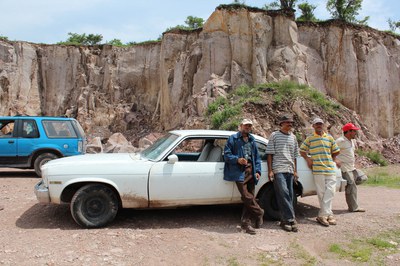
Lopez’s talk explores the development over the last fifty years of a network of Mexican stonemasons, quarry workers, homebuilders, architects, and businessman who primarily provide services to Mexican and Mexican-American clientele in the American Southwest. This binational construction industry has emerged around the excavation, transportation, distribution, and installation of cantera stone, a brittle volcanic rock unique to Mexico. Since at least the 1970s, Mexican migrants who came and settled in the United States have begun to implement ways to bring the stone north. Cantera networks, and the buildings and landscapes transformed by cantera details, provide a unique lens through which Lopez examines how Mexican individuals and families are transforming American streets and neighborhoods. Beyond aesthetics, this industry is changing migrants’ structural relationship to places. Not only is the American city intimately linked with distant geographies, but the very terms inner city, ethnic enclave, and immigrant neighborhood flatten the extent to which transnational social mobility and emergent class distinctions are reconstituting how and for whom these neighborhoods function.
Sarah Lopez, a built environment historian and migration scholar, is an associate professor at the University of Texas at Austin. Lopez's book, The Remittance Landscape: The Spaces of Migration in Rural Mexico and Urban USA, was published by the University of Chicago Press in 2015 and won the 2017 Spiro Kostof Book Award from the Society of Architectural Historians. Lopez was a Princeton Mellon fellow in 2016–2017, and is a faculty affiliate with American Studies, the Amos Rapoport Center for Human Rights and Justice, the Latin American Institute, and the Center for Mexican American Studies. She researches and teaches at the intersections of migration, ordinary landscapes, urbanism, and spatial justice.